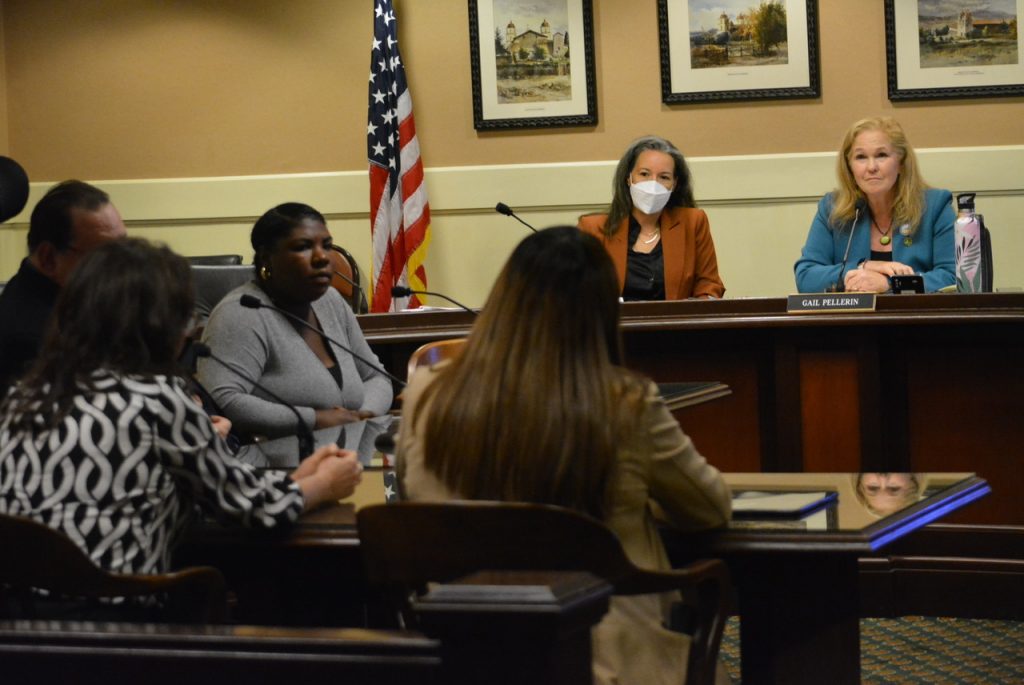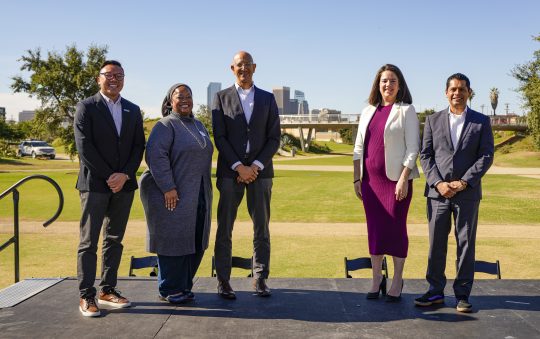
A bill that would have given more “entities” the authority to register eligible voters in Californians, Senate Bill (SB) 299, stalled in the Senate Health Committee last June.
The bill’s language also promises to further automate and streamline the voter registration process while adding safeguards to prevent voter fraud or unlawful voting.
Two weeks ago, the Assembly Committee on Elections held an informational hearing on the bill, also known as the California New Motor Voter program.
Supporters of the bill, including current and former California election officials, community members, students, and others testified before the committee. They detailed how the legislation could transform voting in California.
Related Stories
Great Nephews Salute Their Great Aunt Willie B. Crisp
Chargers Lend a Helping Hand to the Community
“We definitely want to meet voters where they are. We’re looking at ongoing, sustainable funding, trusted messengers are key, and building those partnerships with community-based organizations and county registrar of voters are imperative,” said Assemblymember Gail Pellerin (D-Santa Cruz), chair of the committee. “Improvements are needed to ensure that we have this accurate voter file. There is much still to be done to bridge the gap.”
The purpose of the hearing was to discuss strategies for bridging voter turnout gaps, ensuring accurate registration, and reviewing the impact of recent electoral reforms.
If lawmakers vote to pass SB 299 during the next legislative session, the law would “expand the definition of ‘voter registration agency’ to include all entities designated by the Secretary of State (SOS).
Currently, eligible California residents are automatically registered or pre-registered to vote when they obtain or renew a license or state identification card at the Department of Motor Vehicles (DMV) or conduct other transactions. The DMV then sends their information to the SOS office for processing “unless the person opts out or is ineligible to vote,” as stated in the bill.
SB 299 also provides an option for eligible Californians to decline to register to vote.
Supporters of SB 299 are confident the law would enfranchise more voters who are Black or from other minority groups.
During the hearing, Mindy Romero, founder and director of the Center for Inclusive Democracy at the University of Southern California, provided information on the turnout gap between Black and White voters.
Romero stated that in the 2020 general election, 64% of adult Black voters cast a ballot while 74.5% of White, non-Latino eligible voters went to the ballot box, a 10.5% turnout gap.
In 2022, the gap drastically increased. White voters that cast a ballot decreased to 62.8% in the 2022 General Election while Black voters numbers fell to 43.3%.
“What I really want to emphasize is we still have to make it easier to vote but we also have to make people want to vote. It’s the ‘motivation question,’” Romero said. “When we say motivation, it almost sounds like people are not caring. It’s a story, of course, of our electoral system today that has not supported these groups and made it harder to vote and made it harder to sell the importance of voting.”
Several state agencies in California, such as Covered California, already have the authority to register or pre-register voters.
According to the National Voter Registration Act, federal law that authorizes states “to designate state government agencies and offices that offer public assistance or services to people with disabilities, as well as other suitable offices, as voter registrations agencies.
Those voter registration agencies “could include schools, city and county clerk’s offices, fishing and hunting license bureaus, government revenue offices, and unemployment compensation offices.”
Under SB 299, the SOS would have the authority to designate other entities to register Californians to vote and the process would be simplified with increased digitization.
SB 299 is co-authored by Sen. Caroline Menjivar (D-Van Nuys) and Sen. Monique Limón (D-Santa Barbara).
“Voting is one of the most powerful ways to initiate change in the United States, and simplifying voter registration will have an instant and dramatic effect on voter participation throughout California,” said Limón in statement. “We have taken significant steps in the right direction, but much more can be done to lift up the voices of historically disenfranchised communities.”
SB 299 provides a path to 100% voter registration, advocates say. It was designed to align with similar legislation passed in Alaska, Delaware, DC, Colorado, New Mexico, Massachusetts, Minnesota, Nevada, Oregon and Washington.
Representatives of the California Grassroots Democracy (GDC) – an organization of 140-plus groups that work together to promote legislation that expands voter registration — spoke at the hearing.
As of May 2022, the state had nearly 22 million registered voters, about 82% of adults in California who are eligible to vote, according to a Public Policy Institute of California report.
Currently, California has 4.7 million eligible but unregistered voters, according to GDC. They are disproportionately from working-class Black, Latinx, and Asian American communities.
Kristin Nimmers, policy and campaign manager for the California Black Power Network, said the state has tried to improve the voter registration process but there is a need to push bills that prioritize the most vulnerable populations, including eligible individuals who were formerly incarcerated.
The other pressing barriers facing Black voters, Nimmers said, are a lack of understanding of the voting process due to information gaps and inadequate outreach, a mistrust of the system, and limited language access.
Nimmers also reminded the committee that the COVID 19 pandemic has impacted the voting and registration behaviors in African American and Black immigrant communities.
“Many of these conditions have worsened since the pandemic,” said Nimmers. “Black residents are facing gentrification and displacement and are moving out of traditional Black neighborhoods in Los Angeles and the Bay Area into areas like the Central Valley and Inland Empire. They aren’t updating their registration.”







